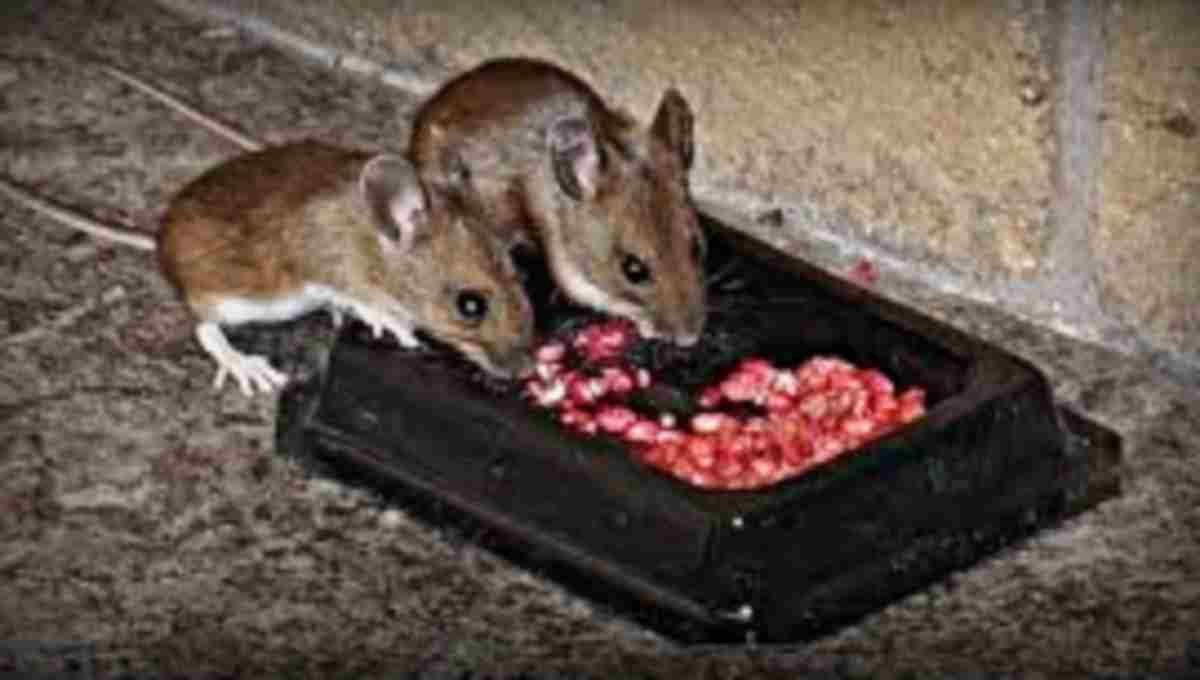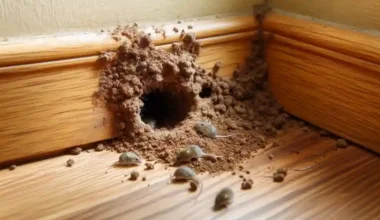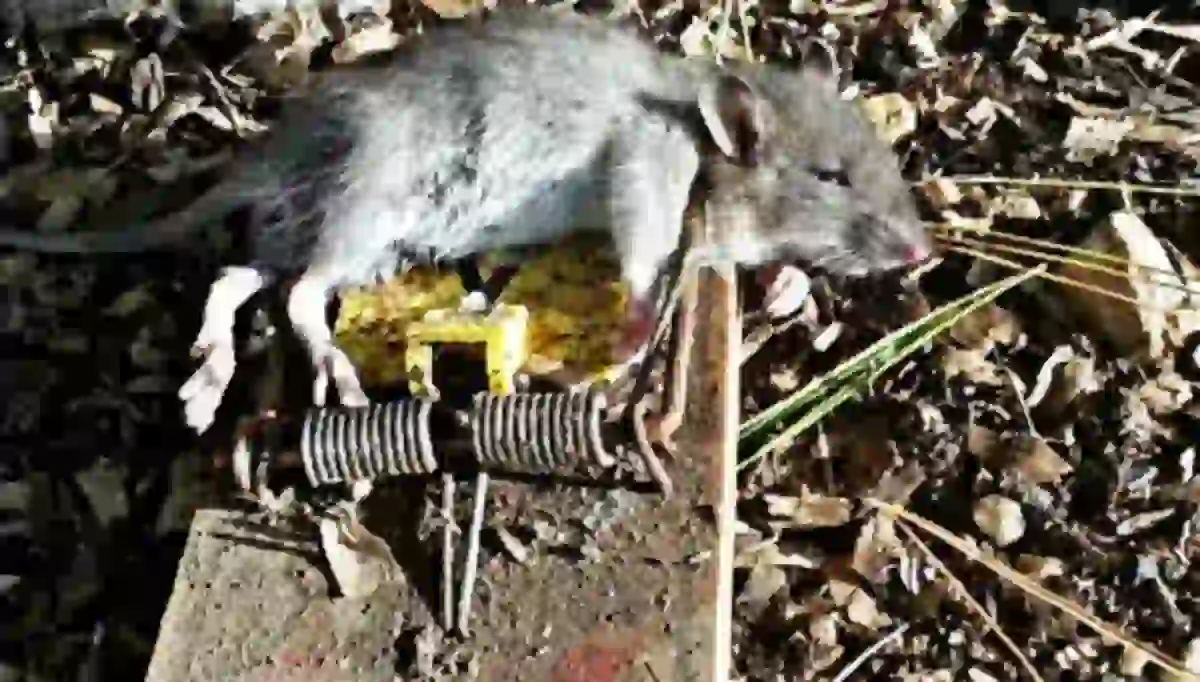Mice eating poison but not dying can occur when mice have developed a tolerance to certain types of poison. This can happen over time as mice are exposed to the same poison repeatedly, and their bodies adapt to it. As a result, they can consume the poison without experiencing the typical symptoms of death. This can be a major problem for pest control efforts, as it makes it difficult to eliminate mouse infestation effectively.
Can mice survive eating poison?

Mice can survive eating poison. Per BBC, scientists have reported that some European house mice have developed resistance to the strongest poisons. German and Spanish mice have rapidly evolved this trait by breeding with an Algerian species, with which they have been separate for over a million years.
Mice are critters known to be resilient and survive in a variety of environments, including their ability to survive poisoning.
While poison is typically used as a method of pest control to eliminate mouse populations, it is not completely effective because mice can develop a tolerance to certain types of poison over time. Thus, they begin to consume the poison without experiencing the typical symptoms of death.
This leads us to bait shyness. Mice can also exhibit the phenomenon known as bait shyness (refer to Oxford Reference) or bait aversion. It takes place when mice are repeatedly exposed to the same poison over time. As the critters eat the poison, their bodies gradually adapt and they then eat larger amounts without experiencing any negative effects.
Some factors that possibly contribute to the development of bait shyness in mice include, for example, if the poison is not strong enough or if the mice are not exposed to it frequently enough, they may not develop a tolerance to it. Moreover, if the mice have access to other food sources, they are less likely to eat the poison in large enough quantities.
Mice eating poison but not dying: what to do
If mice keep eating the poison but not dying, you could be making a mistake. You could do with the strategies below to outsmart mice that won’t die after eating the poison.
1. Change the type of poison
One approach is to rotate the type of poison used, as mice are less likely to develop a tolerance to different types of poison.
2. Use a variety of baits
Additionally, using a variety of different baits and placing them in different locations can also help to reduce bait shyness.
3. Don’t remove the poison too early
You may not have continued placing the bait for long enough. Thus, keep placing the rodent poison until the rodents are no longer feeding on it.
4. You may have placed the bait stations incorrectly
This mistake can lead to problems. It’s important to use enough bait stations and place them in the correct location, such as within 20 to 30 feet of each other in some cases.
The number of bait stations needed may vary depending on the number of rodents on your property. Additionally, to make sure that mice see the bait as a consistent food source, the presence of bait must be consistent.
5. Mice are resistant to the poison
Sometimes, the rodents may be resistant to the rodenticide that you use. This could be the case if several weeks have passed without results. Resistance is more common for multiple-dose anticoagulants, therefore, in such cases, try a different type of poison.
6. Eliminate food sources
The mice need to eat the poison for it to be effective. Therefore, if there are other exposed food sources around, they may not consume the poison at all. Make sure to eliminate other food sources by practicing proper sanitation methods and storing food, including grain and pet food, in airtight containers.
7. Stop using poison
Instead of poison, set up your property to discourage mice by sealing off possible entry points and using humane traps. Glue traps are not humane (it’s even better to euthanize the pest), do don’t use them as you might end up pitying the poor critter so much that you would want it out of the sticky board. Don’t hesitate to seek professional assistance if you suspect high infestation.
How much poison does a mouse need to eat to die?
The amount of poison a mouse needs to eat to die can depend on factors such as the type of poison and the tolerance level of the mouse. Some poisons are more potent than others, so a mouse may have to consume a larger amount of a less potent poison to die. That’s to say that if a mouse has developed a tolerance to a certain type of poison, it could have to eat more of that poison before dying.
Some poisons are more effective when consumed over a long time since it takes some time for the poison to build up in the rodent’s system. Therefore, make sure to place the bait in the areas where the mice are most active and have access to it consistently.
Only use rodenticides under professional guidance and following the regulations and laws of your state. The United States Environmental Protection Agency (EPA) has highlighted the restrictions on rodenticide products. For example, every ready-to-use bait station products currently available on the consumer market for controlling mice and/or rats contain one of the following rodenticides as their active ingredient:
- Bromethalin
- Chlorophacinone
- Diphacinone
Where do mice go after eating poison?
The places mice go to after eating poison are places that typically feel safe and secure, such as in a burrow or nest. These critters may also seek out a hiding place in a wall or under a piece of furniture such as your sofa.
In some cases, you could even see the mouse running around like it is doing fine. However, the poor critter will only appear normal for some time before showing signs of illness or death. This leads to one disadvantage of bait poison, which is that a poisoned mouse can die in a hard-to-reach location like a wall or in the attic which is not easily accessible.
A dead mouse may attract other pests such as flies, beetles, and maggots, which can cause additional problems. You want to properly dispose of any dead mice as soon as they are found, making sure not to handle them with your bare hands. If your child touched a dead mouse in the process, have them wash their hands with soap and water.
Do mice take poison back to their nest?
Mice may take the poison back to their nest, but it is not guaranteed for some reason. It depends on the type of poison and the circumstances under which it is placed. Let’s say a mouse ingests a type of bait that causes it to become sick immediately, it may not have the ability to return to the nest with it.
On the downside, poisons with delayed reactions can be a concern as they may lethally expose other animals or pets. Make sure to follow the label instructions when using any pest control products and only place them in areas where they are not accessible to non-target animals.
Is it better to poison or trap mice?
When using poison to control mice, it is important to consider the potential consequences. Mice may take the poison back to their nest and consume it later, potentially dying in hidden areas such as walls or attics, causing unpleasant odors and attracting other pests. Additionally, the poison may continue to kill and leave rotting mice in inaccessible areas. Furthermore, poison may also harm other animals such as birds, cats, and pet dogs.
When you trap a mouse, it will die where you place the trap. You can then dispose of it as a snack for a crow or shrew, or feed it to a fox. However, be aware that trapping may also attract skunks. Additionally, it’s important to note that mice can sometimes escape or flush out of the trap, so it’s important to check and dispose of the trap regularly.
Mice are partially blind and tend to run along walls, so placing a mouse trap with a large, contrasting trigger (such as yellow or gray) against the wall can be effective. There is no need for bait, as the mouse’s sense of smell is not as developed as its sense of touch, and bait can attract other insects or animals. Also, always check and reset the trap regularly. They follow each other by leaving behind spore “calling cards” which look like poppy seeds, and traces of urine. However, these traces are usually not obvious to humans.
If you have a high population of mice, setting multiple traps (around 6) and keeping track of their success rate can help determine the best location for trapping. When you no longer catch any mice, you can identify the most effective trap and location. To easily locate the trap, attach a string or tie it to a nearby object, such as an empty seltzer can. Through this process, you will also become familiar with identifying the differences between types of rodents such as mice, shrews, and voles.
Sanitizing the trap can be done by spraying it with Windex and allowing it to dry in the sun. One effective trap option is “The Better Mouse Trap”. To make the trap more sensitive, add a piece of scotch tape to the back ridge. Keep in mind that mouse footprints are light, so a sensitive trigger is important. Additionally, this trap is durable and can pass down as an heirloom.
See how: got mice off eating my plants
Conclusion
While poison is a common method of pest control used to eliminate mouse populations, it is not always effective. Mice can develop a tolerance to certain types of poison over time, making it possible for them to consume the poison without experiencing any negative effects. However, by rotating the type of poison used and using a variety of different baits, you could overcome mice eating poison but not dying and effectively control mouse populations.






